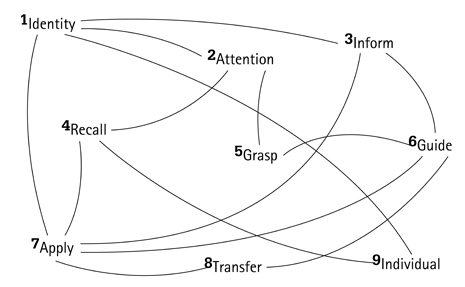We at DesigningZoos.com always love guest bloggers and new, insightful information. So when former PGAV intern, Russell Ploutz, offered to share his thesis project on learning in zoos, I jumped at the chance to share his brilliance with the world. He has summarized his extremely in-depth and thoughtful project for us, and I'll be posting it via 3 installments. Without further adieu... Cognitive Based Zoo Design Guidelines by Russell Ploutz
What is learning?
Learning is the process of transforming information into knowledge using cognitive processes - the “mental process that individuals undergo as they think, learn, and perform problem-solving and decision-making activities.” If humans use predictable processes during learning, how can zoo exhibits engage those processes to improve visitor learning? Insights from cognitive psychology provide guidance for how to facilitate human learning processes, creating fulfilling visitor experiences while achieving zoos’ mission of education.
By researching the fundamentals of learning I developed a set of design guidelines for zoo exhibits which stimulate and facilitate visitor’s learning processes. I created the design guidelines by gathering professional zoo designer’s input, reviewing literature and personal findings resulting in a design manual for engaging cognitive processes. The manual contains three elements: background information synthesizing literature specific to zoo exhibit designers, design guidelines for engaging learning processes and, example projects I designed illustrating the application of the guidelines.
Learning Principles
Fifty-three design guidelines are grouped into nine principles addressing different aspects of learning. Each learning principle contains related guidelines and background information which ground the guidelines in scientific studies. Additionally, the principles contain methods and potential design strategies for employing the design guidelines.
The first principles describe prerequisite cognitive processes to engage prior to transforming information into knowledge. Meeting these initial principles is critical because without their provision learning is unlikely to occur.
1. Identity - learning needs to fulfill our motivations.
For learning to succeed in places like zoos where we control how and what we engage, we need to want to learn. The Identity principle builds on Falk’s work on Visitor Identities describing visitor’s motivations and needs. The principle explains how to fulfill each visitor’s Identity by productively satisfying their social and personal needs with learning opportunities.
2. Attention - we must engage the exhibit.
Once visitors are motivated to engage in learning, then exhibits can assist visitors in focusing on learning content. For learning to occur, we must direct our attention in the exhibit to acquire information. The Attention principle describes how exhibit characteristics can direct visitor’s attention on learning content to engage the information.
3. Inform - we need to know how to engage.
In addition to directing visitor’s attention on learning content, exhibits also need to inform visitors as to how they can engage in learning. If we do not know how to engage the exhibit, how can we learn from the exhibit? The Inform principle explains how exhibits can directly and indirectly notify visitors of learning opportunities.
4. Recall - we use prior knowledge with new information.
Once visitors are prepared to learn the exhibit can facilitate one of the most critical aspects in learning, the recall of prior information and experiences. We use our past experiences to understand new information and situations through contextualization. This principle explains how exhibit elements and design characteristics can evoke past memories helping visitors understand new information.




























